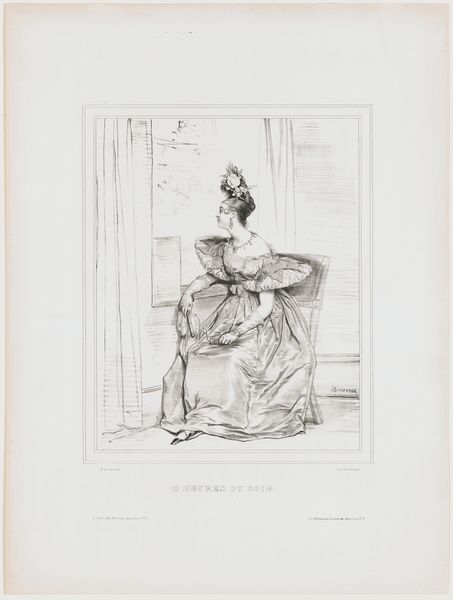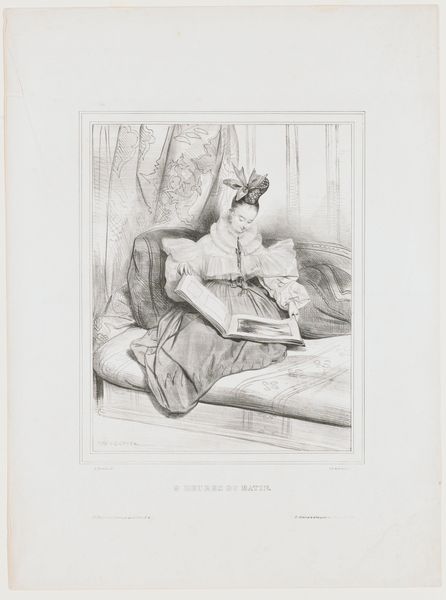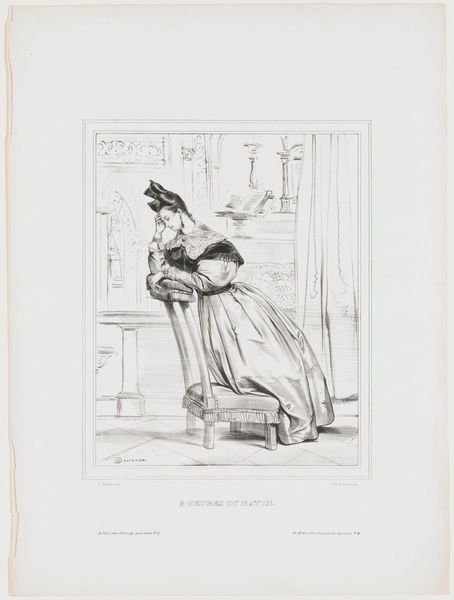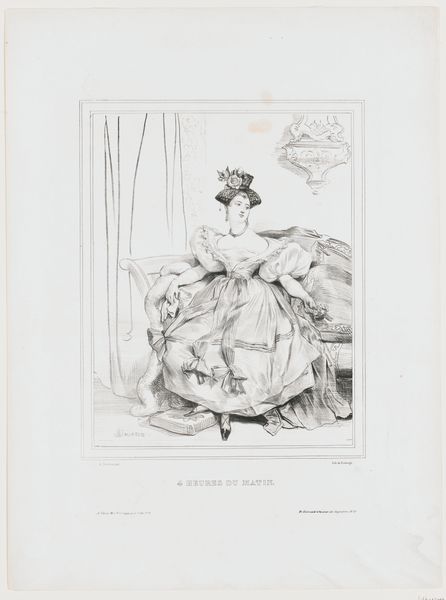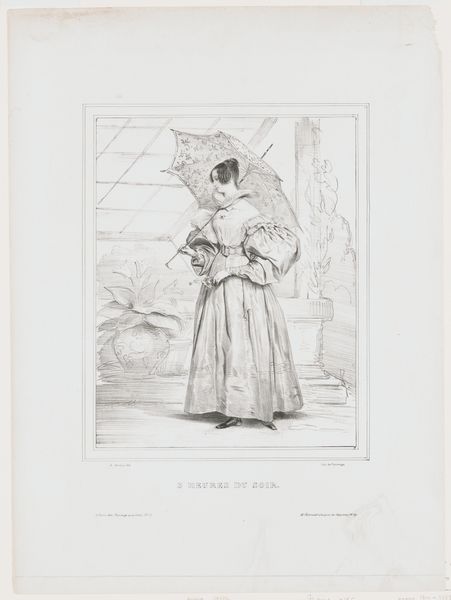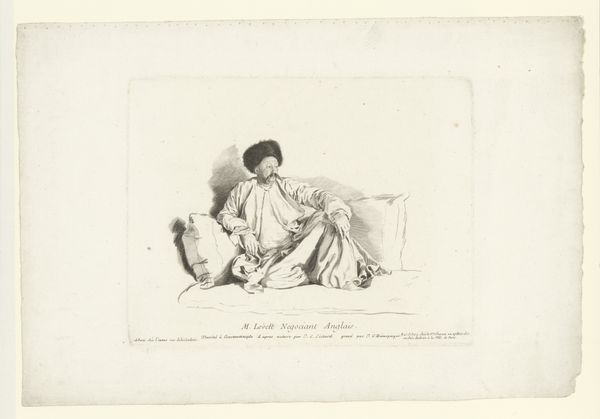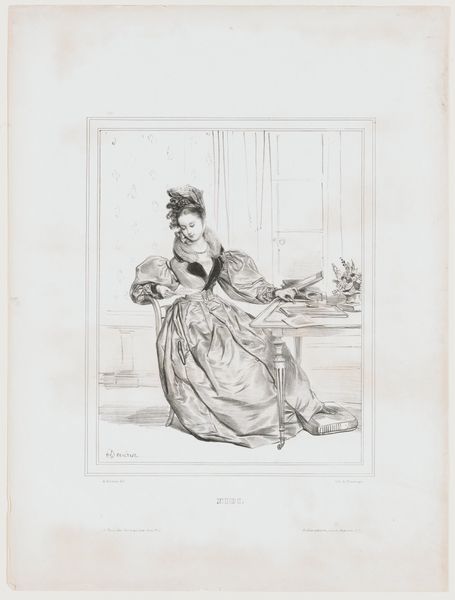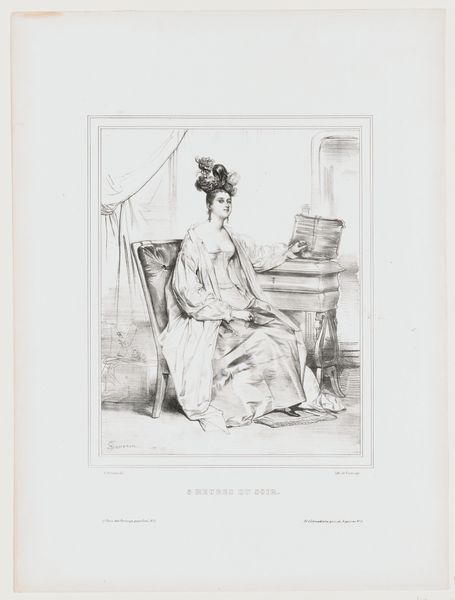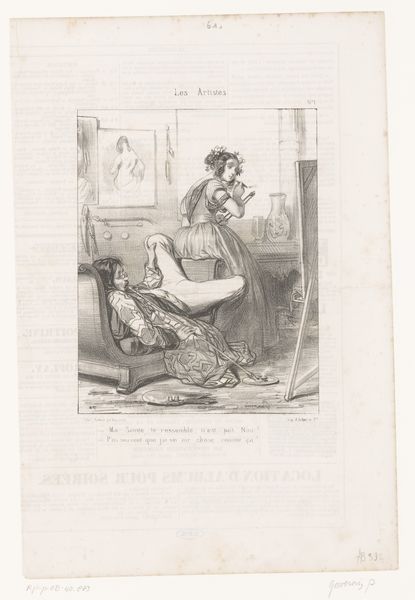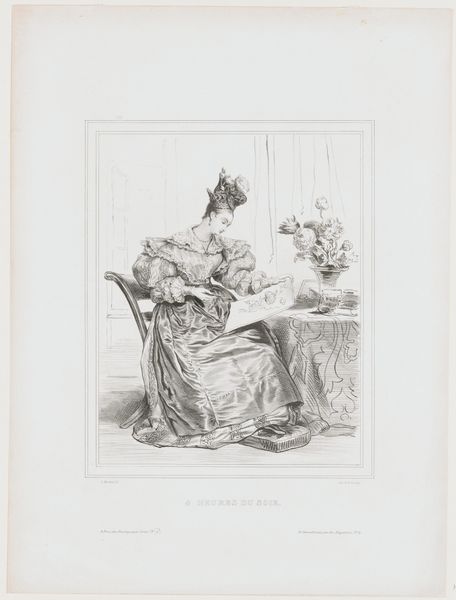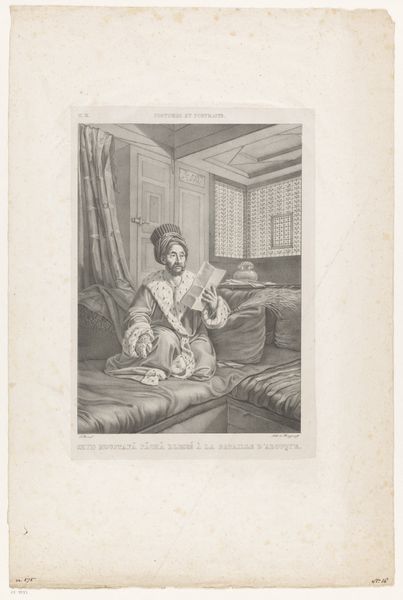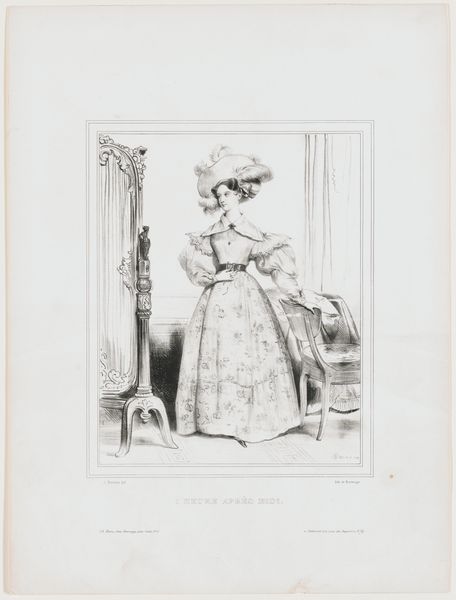
drawing, lithograph, print, paper
#
portrait
#
drawing
#
lithograph
# print
#
figuration
#
paper
#
romanticism
#
line
#
genre-painting
Dimensions: 13 1/4 x 9 1/4 in. (33.66 x 23.5 cm) (image)
Copyright: Public Domain
Editor: Achille Devéria’s "Heure Apres Midi. Mlle. Cecile de Radepont", created around 1830, is a lithograph on paper. There’s a serene, almost staged quality to it. What story do you think it’s telling? Curator: It presents a specific image of femininity circulating in early 19th-century France, shaped by bourgeois ideals and the rising print culture. These images, widely disseminated, functioned as models of acceptable behavior and aspirational identity for women. The composition is quite deliberate, isn't it? Almost like a performance. Editor: Yes, I noticed that too! The woman seems very aware of being observed. What would her contemporaries have made of it, beyond just seeing a pretty picture? Curator: Well, consider the burgeoning market for such prints. They weren't simply decorative. They also reflected a societal shift towards private domesticity for women and a culture increasingly obsessed with visual representation. Do you notice the mirror? Editor: I see it, tucked in the background. Is that relevant? Curator: Absolutely. The mirror reinforces this idea of self-reflection and presentation, very much linked to the growing importance of appearance in defining social status for women. The angle of the portrait allows viewers a specific glimpse into the private space, but framed, edited. Editor: So, it's less about the individual and more about reinforcing a certain social order? Curator: Precisely. Art, at that time, served powerful ideological purposes beyond aesthetic pleasure. Disseminating and thus, normalizing types or archetypes. We are really seeing this in its beginnings at this time, aren't we? Editor: I hadn’t considered it as such a deliberate piece of social messaging. It’s interesting to think about how a seemingly simple portrait can carry so much cultural weight. Curator: Exactly. It's a window into the past, reflecting not just an individual but an entire society’s values and power structures. I appreciate the insight you’ve provided, emphasizing how social forces and print culture can form meaning.
Comments
No comments
Be the first to comment and join the conversation on the ultimate creative platform.
